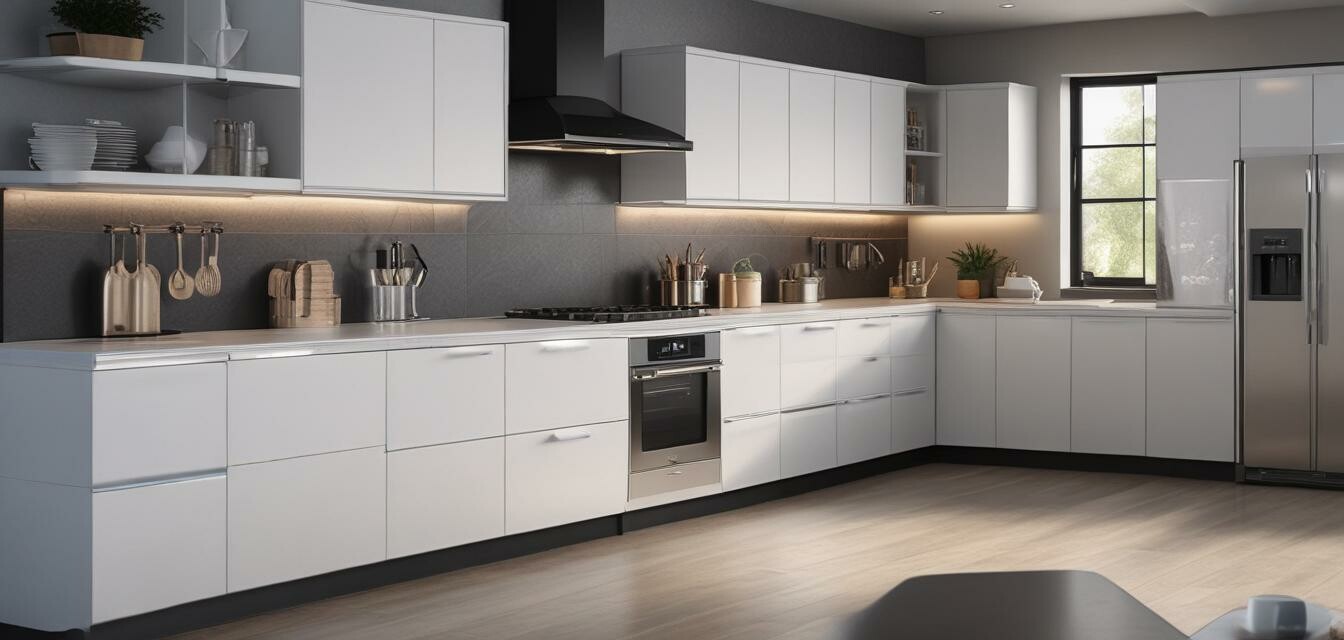
Evaluating Smart Appliance Energy Ratings
Key takeaways
- Understanding energy ratings helps you choose energy-efficient appliances.
- Look for ENERGY STAR labels to identify high-efficiency models.
- Compare the energy consumption of appliances to save on utility bills.
- Be aware of the different energy rating systems used around the world.
- Regularly check for updates on appliance efficiency standards and technology.
Choosing smart appliances for your kitchen can greatly impact your energy consumption and create a more sustainable environment. As technology evolves, smart appliances become more efficient, offering features that reduce energy waste. In this guide, we will delve into how to read and compare energy ratings of smart appliances, allowing you to make informed choices that benefit both your wallet and the planet.
Understanding energy ratings
Energy ratings are indicators of how much energy an appliance consumes. They provide a standardized way for consumers to determine which products are more efficient. In general, the higher the rating, the less energy the appliance uses, which translates to lower utility bills.
Common energy rating systems
| Region | Rating System | Description |
|---|---|---|
| USA | ENERGY STAR | A certification program that identifies energy-efficient appliances. |
| Europe | EU Energy Label | A color-coded label that rates the appliance from A (most efficient) to G (least efficient). |
| Australia/New Zealand | Energy Rating Label | Displays star ratings to indicate energy performance. |
How to read energy labels
Understanding energy labels can be straightforward if you know what to look for. Here’s a breakdown of the components commonly found on energy ratings:
- Overall Efficiency Rating: This shows the energy consumption level. Higher ratings indicate greater efficiency.
- Annual Energy Consumption: Measured in kilowatt-hours (kWh), this figure tells you how much energy the appliance is expected to use in a year.
- Cost Estimates: Many labels provide a projected yearly cost based on the energy consumption, helping you gauge long-term expenses.
- Features and Innovations: Look for any specific energy-saving technologies the appliance employs.
Comparing energy-efficient appliances
When shopping for a new appliance, comparing energy ratings from different models can help you make the right decision. Below is a comparison table that showcases different smart appliances with their respective energy ratings:
| Appliance | Energy Rating | Annual Energy Consumption (kWh) | Estimated Yearly Cost |
|---|---|---|---|
| Smart Oven | ENERGY STAR | 450 | $60 |
| Induction Cooktop | A+ | 370 | $50 |
| Smart Refrigerator | A++ | 525 | $75 |
| Touchless Faucet | N/A | Varies greatly based on usage | Negligible |
Benefits of energy-efficient appliances
Investing in high-tech energy-efficient appliances not only helps the environment but also brings financial benefits:
- Lower Utility Bills: These appliances use less energy, which means significant savings on monthly bills.
- Increased Home Value: Energy-efficient homes are attractive to buyers, boosting your property value.
- Government Incentives: Many regions offer tax credits or rebates to homeowners who invest in energy-efficient appliances.
Tips for choosing energy-efficient appliances
Beginners section
- Research the latest energy-efficient models before making a purchase.
- Read consumer reviews and expert opinions to gauge performance.
- Visit [Bluetooth-Enabled Devices](/products/bluetooth-enabled-devices) to find connected appliances that may have better energy ratings.
- Check [Energy-Efficient Appliances](/products/energy-efficient-appliances) for a curated list of top-rated energy-saving products.
Conclusion
Evaluating smart appliance energy ratings is essential for making informed decisions in 2025 and beyond. With the rapid development of technology and the growing focus on environmental sustainability, understanding energy consumption has never been more crucial. By choosing energy-efficient models, you not only help reduce your carbon footprint but also make a wise investment in your home.
Pros
- Reduces energy consumption and lowers utility bills.
- Increased home value when selling.
- Promotes sustainability and environmental awareness.
Cons
- Higher initial purchase cost compared to conventional appliances.
- May require specific installation considerations.
- Some high-tech features may not be necessary for all users.
For more guides on selecting the best high-tech appliances for your kitchen, check our [Buying Guides](/blog/buying-guides) section and discover how to enhance your cooking experience.